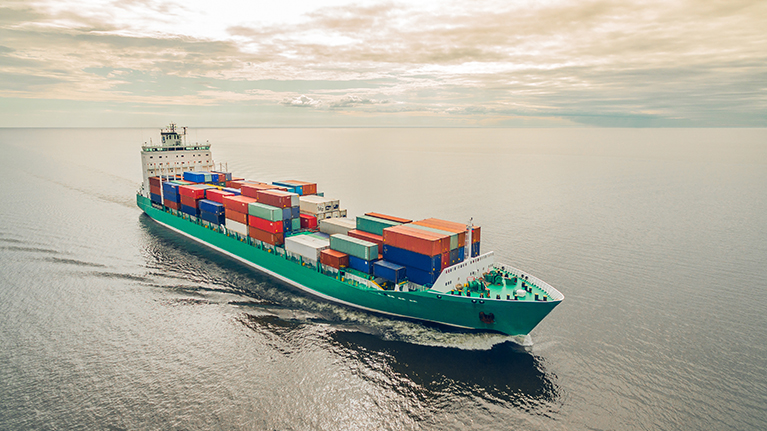Maritime transport: EU-ETS 1 and MRV
Maritime transport will also be integrated into the existing EU ETS 1 from 2024. This means that shipping companies will have to report the volume of emissions caused and surrender sufficient emission allowances to cover the emissions emitted by their ships that enter the European Economic Area (EEA), leave the EEA or move and stay within the EEA. The number of allowances to be surrendered is determined based on aggregated emissions data at company level pursuant to the Directive (EU) 2003/87 requirements. Monitoring and reporting the emissions caused have been an obligation since 2018.
Latest
Information maritime transport
Here you can find an overview of the latest news, dates and publications on maritime transport. You can use the tab function to filter by category or use the button at the bottom of the box to display a complete overview.
Overview
News
Dates
Publications
Law
Maritime transport
Here you will find laws and regulations and (if available) jurisdiction on the subject.
Legislation
Jurisdiction
-
Registry account
All actors participating in emissions trading must open an account in the Union Registry, which is provided by the European Commission. The administration of the German part of the Union Registry as well as the processing of account applications is carried out by the German Emissions Trading Authority (DEHSt). A maritime operator holding account is opened for each shipping company as defined in the Emissions Trading Directive and thus may contain several ships. The surrender transactions of the acquired emission allowances can only be carried out via this account type.
According to the current status, the opening of these maritime operator holding accounts in the registry should be possible starting from April 2024. Once the Registry Regulation has been amended to take into account the maritime sector we will provide further information on setting up and using the accounts on our website. The European Commission is expected to adopt the regulation in the fourth quarter of 2023.
Trading account
A trading account (or several) can already be opened in the Union Registry.
The account opening is subject to fees according to the Special Fees Regulation BMU - BMUBGebV, Section 5 (link below). In addition, there are extended requirements for the verification of account holders (see Delegated Regulation (EU) 2019/1122, Annex IV) (link below).
Once a maritime operator holding account has been opened by a shipping company, emission allowances can be received from a trading account. The process of setting up the accounts will be equivalent to setting up accounts in the already existing EU ETS 1. Instructions can be found on our website under Union Registry (link below).
Further information
- Besondere Gebührenverordnung des Bundesministeriums für Umwelt, Naturschutz und nukleare Sicherheit für individuell zurechenbare öffentliche Leistungen in dessen Zuständigkeitsbereich
- Delegierte Verordnung (EU) 2019/1122 der Kommission vom 12. März 2019 zur Ergänzung der Richtlinie 2003/87/EG des Europäischen Parlaments und des Rates im Hinblick auf die Funktionsweise des Unionsregisters
- Union Registry
-
100 per cent of emissions from journeys within the European Economic Area (EEA) and from port calls are covered by emissions trading. Emissions from journeys between a port within the EEA and a third country are only subject to a 50 per cent surrender obligation, regardless of the direction of transport (see Article 3 ga Directive 2003/87/EC). Journeys begin and end in ports of call (see also FAQ 2 on the term ‘Port of call’ and exceptions).
-
A shipowner may delegate the responsibility for the operation of its ships and the compliance with the EU ETS 1 obligations to another person or organization by a mandate. The basic requirement is that the assigned person or organization represents the shipowner as an ISM Manager.. It is therefore necessary for the ISM manager to hold a ‘Document of Compliance’ (ISM-DOC), that identifies him as ISM-certified and that he has assumed all duties and responsibilities under the ISM Code for the ships concerned from the shipowner. If this is the case, then this ISM manager can assume responsibility for the compliance with the EU ETS 1 obligations from the shipowner (see Article 1(3) (EU) 2023/2599). Following proper authorisation in accordance with this provision (mandate), the ISM manager is deemed to be a shipping company within the meaning of Directive 2003/87/EC (see Article 3(w)) Directive 2003/87/EC). A mandate template can be downloaded via the link below.
Further information
General information on EU ETS 1
Further pages
Maritime Traffic












